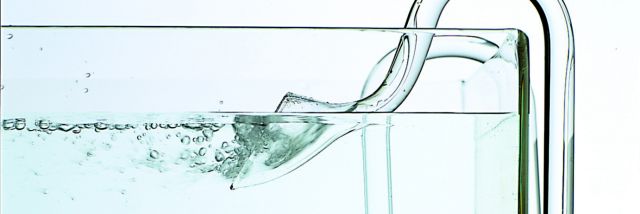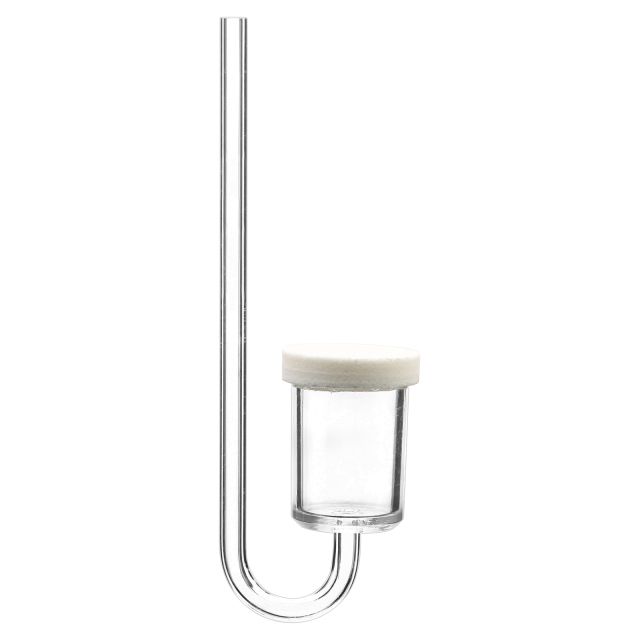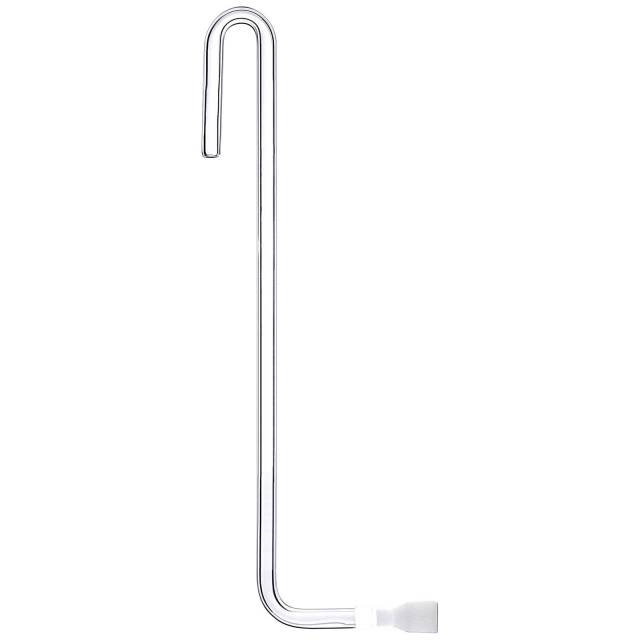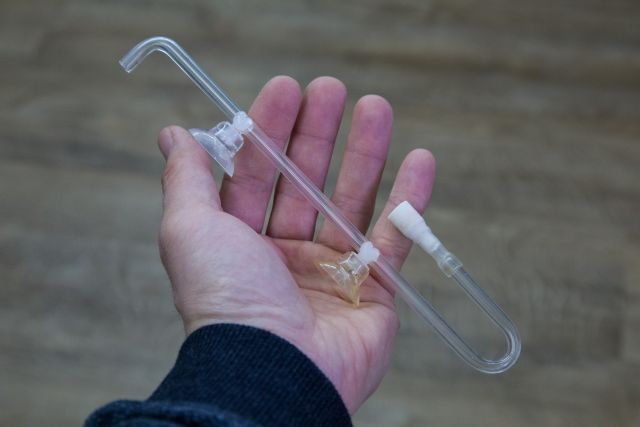In aquascapes with a very fast-growing plant mass, oxygen shortages during the dark phase can occur in rare cases. This can be seen, for example, by gasping fish found in the morning, keeping close to the surface, or low, but steady losses in your shrimp population, which are also found mostly in the morning. Almost every morning you will discover a few dead animals, often with failed molts (apparent from a cracked shell in the neck area). This can of course have several reasons, but especially in the case of overnight deaths, the reason is usually, that too little oxygen is available at night. Aquatic plants produce oxygen during the day, but use it up overnight. The remaining creatures like bacteria, fish and invertebrates need oxygen 24/7, so an enrichment with oxygen at night is definitely a good idea here.
Lifting the Lily Pipe

Copyright - Aqua Design Amano - ADA
A popular method is lifting up the outflow in the beginning of the dark phase. This procedure is in practice in e.g. the ADA Gallery in Niigata, Japan. The Lily Pipe is installed a little higher on the pane via suction cups, causing a noticable agitation of the surface along with an audible murmur of the splashing water. The stronger surface movement ensures a higher gas exchange, and thus, an increase in oxygen input. After the dark phase, the filter outlet is returned to its original position in the morning.
Additional ventilation
A more comfortable (and silent) method would be to install an air stone inside the aquarium, which is powered by a diaphragm pump. The pump can be activated with a timer, adding oxygen only at night. Thus, the whole process can be automated. For aesthetically demanding aquascapers, there are air stones available in a correspondingly attractive look. The Neo Air Diffusor from AQUARIO is an especially elegant air diffuser made of acrylic glass.

An even smaller and unobstrusive product can be found in the Aquasabi Glass Air Diffusor - a tiny, subtle air stone together with matching glass ware as hose guide.

Installation guide
In the hang-on version, the glassware can easily be hung over the side pane of the aquarium on its curved end. The straight end is connected with the actual air stone, using a small end of tube. Glassware as well as the diffuser are purposefully oversized minimally in diameter, ensuring a firm fit but also making it harder getting the hose over the glassware. The hose should be heated up before installation, e.g. by shortly dipping it into hot water (instructions, see here).
If the hang-on version is not an option (for example, because the side pane is too thick), you can turn the glassware around and attach it using the included suction cups. For this purpose, the two ends are reversed: The straight end now leads over the edge of the aquarium and the diffuser is attached at the curved end.

Ventilation and CO2-fertilization
Even though an increased oxygen supply does not have a direct effect on the CO2-content in a plant aquarium, stronger movement in the water surface (e.g. caused by a raised lily pipe) can nevertheless cause more CO2 being driven out of the aquarium water. In this case, it is necessary to adjust carbon fertilization during the day, compensating for nocturnal losses. This can be monitored using a CO2 drop checker.